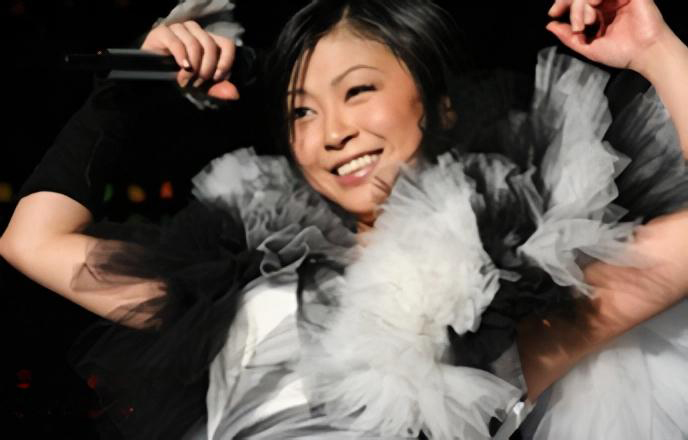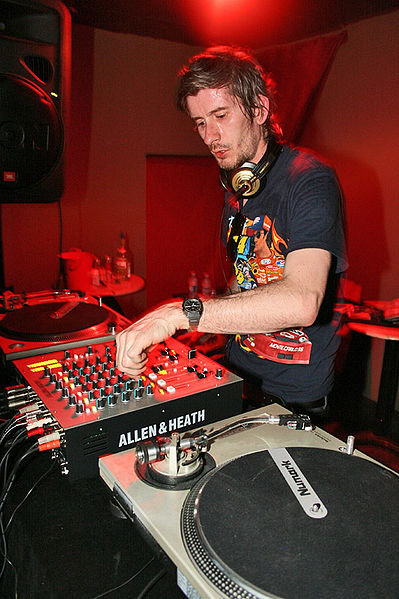|
Eurobeat
Eurobeat refers to two styles of dance music that originated in Europe: one is a British variant of Italian Eurodisco-influencedAng, Ien & Morley, David (2005). "Cultural Studies: Volume 3, Issue 2". ''Routledge''. pgs. 171, 173, 170. . "Eurorecords had to have immediate cross-national appeal, musical simplicity was of the essence- a bouncy beat, just one chorus hook, elementary lyrics. The fun of these records was entirely a matter of sound quality, but once a record was a hit it took on a kind of sleazy, nostalgic charm of its own. It was precisely the brazen utility of these records, in short, that gave them gay disco consumer appeal too. ..Eurodisco also had an obvious element of camp -British club audiences took delight in the very gap between the grand gestures of Eurosingers and the vacuity of their songs." dance-pop, and the other is a hi-NRG-driven form of Italo disco. Both forms were developed in the 1980s. Producer trio Stock Aitken Waterman and pop band Dead or Alive ... [...More Info...] [...Related Items...] OR: [Wikipedia] [Google] [Baidu] |
Maurizio De Jorio
Maurizio De Jorio (born September 24, 1968) is an Italian music producer and singer, born in Trento, Italy. He became involved in mainstream musical production in the mid-1980s. Like most musicians in the Eurobeat genre, De Jorio has performed under a number of pseudonyms for various labels (including Delta, and SinclaireStyle). He is most well known for being one part of the Eurodance group Max Coveri, alongside Edoardo Arlenghi, Mauro Farina, Corrado Baretta, Bratt Sinclaire, and Pamela Prandoni, producing hit tracks such as "Running in the 90s" and " Night of Fire". Both are featured in the anime '' Initial D'' – of which both appearances (among other songs featured in the anime) has garnered incredible popularity for De Jorio and the Eurobeat genre in general. Some of the other songs used in ''Initial D'' are: "Speedy Speed Boy", "Stop Your Self Control" (as 'Marko Polo'), "Golden Age", "Running in the 90s" (as 'Max Coveri'), "Take Me to the Top", (as 'D. Essex') and "No On ... [...More Info...] [...Related Items...] OR: [Wikipedia] [Google] [Baidu] |
Para Para
or Para-Para is a synchronized dance that originated in Japan. Unlike most types of club and rave dancing, Para Para features specific synchronized movements for each song, much like line dancing. Para Para has been around since the early 1980s, when European countries started selling Italo disco and Eurodisco and, in the mid-to late 1970s, new wave and synthpop music in Japan. However, the dance did not achieve much popularity outside Japan until the late 1990s. Para Para is strongly associated with Eurobeat. Eurobeat artist Dave Rodgers has described Para Para as the only way to dance to Eurobeat, which is usually "so fast." Description Para Para dancing consists of mostly upper body movements in synchronization with a four-on-the-floor rhythm. Dancing involves choreographed motions with the arms and hands while stepping to the right and left, similar to the movements of traditional festival dances such as ''Bon Odori'' and cheering squads called '' Ōendan''. Para ... [...More Info...] [...Related Items...] OR: [Wikipedia] [Google] [Baidu] |
Super Eurobeat
is a CD compilation series of Eurobeat music in Japan. The series itself is one of the longest-running music compilations. It has been running for over thirty years and the current list consists of 250 volumes (not counting the many "''Super Eurobeat presents''" albums). Originally, Time Records, Flea Records and Discomagic were some of the record labels that appeared on the original ''Super Eurobeat'' albums. After eight non-stop albums, the series was changed over to Avex Trax. The final volume originally was considered to be ''Super Eurobeat Vol.250'' but in an interview with SEB Adviser and resident DJ, DJ BOSS (Y&Co. Ltd.) it was confirmed that ''Super Eurobeat'' would definitely be continuing, but as a yearly release only, starting with ''The Best of Super Eurobeat 2019''. Accolades See also * Initial D * Dave Rodgers References External links * by Avex Group Avex Inc. ( kabushiki gaisha , commonly known as Avex and stylized as avex) is a Japanese Conglomerat ... [...More Info...] [...Related Items...] OR: [Wikipedia] [Google] [Baidu] |
Italo Disco
Italo disco (variously capitalized, and sometimes hyphenated as Italo-disco) is a music genre which originated in Italy in the late 1970s and was mainly produced in the 1980s. Italo disco evolved from the then-current underground dance, pop, and electronic music, both domestic and foreign (hi-NRG, Euro disco) and developed into a diverse genre. The genre employs electronic drums, drum machines, synthesizers, and occasionally vocoders. It is usually sung in English, and to a lesser extent in Italian and Spanish. The origin of the genre's name is strongly tied to marketing efforts of the ZYX record label, which began licensing and marketing the music outside Italy in 1982.Folklore that ZYX boss Bernhard Mikulski coined the term ''Italo-disco'' in 1983 was long published on Wikipedia, but is unsubstantiated; to date, reliable third-party documentation has not been found to support whether ZYX label boss Mikulski himself named it, or whether ZYX was even the first to publish t ... [...More Info...] [...Related Items...] OR: [Wikipedia] [Google] [Baidu] |
J-pop
J-pop (often stylized in all caps; an abbreviated form of "Japanese popular music"), natively known simply as , is the name for a form of popular music that entered the musical mainstream of Japan in the 1990s. Modern J-pop has its roots in traditional music of Japan, and significantly in 1960s in music, 1960s pop music, pop and rock music. J-pop replaced ''kayōkyoku'' ("Lyric Singing Music"), a term for Japanese popular music from the 1920s to the 1980s in the Japanese music scene. Japanese rock bands such as Happy End (band), Happy End fused the Beatles and Beach Boys-style rock with Japanese music in the 1960s1970s. J-pop was further defined by New wave music, new wave and Crossover music, crossover Jazz fusion, fusion acts of the late 1970s, such as Yellow Magic Orchestra and Southern All Stars. () Popular styles of Japanese pop music include city pop and technopop during the 1970s1980s, and Eurobeat#J-Euro, J-Euro (such as Namie Amuro) and Shibuya-kei during the 1990s and 2 ... [...More Info...] [...Related Items...] OR: [Wikipedia] [Google] [Baidu] |
Stock Aitken Waterman
Stock Aitken Waterman (abbreviated as SAW and also known as the Hit Factory) are an English songwriting and record production trio consisting of Mike Stock, Matt Aitken and Pete Waterman. The trio had great success from the mid-1980s through to the early-1990s. SAW is considered one of the most successful songwriting and producing partnerships of all time by the '' Guinness World Records'', scoring more than 100 UK Top 40 hits (many of which were also worldwide successes) and earning an estimated £60 million in royalties. The trio had thirteen UK No. 1 singles including three consecutive UK No. 1s and three US No. 1 singles. They also had at least one record in the UK Top 100 Singles Chart every week between March 1986 and October 1990. The group have sold 500 million units globally, and they also received a Brit Award for Best British Producer in 1987 along with nine Ivor Novello Awards between 1988 and 1990. In 1990 SAW picked up three Ivor Novello Awards for Songwr ... [...More Info...] [...Related Items...] OR: [Wikipedia] [Google] [Baidu] |
Hi-NRG
Hi-NRG (pronounced "high energy") is a genre of uptempo disco or electronic dance music (EDM) that originated during the late 1970s and early 1980s. As a music genre, typified by its fast tempo, staccato hi-hat rhythms (and the four-on-the-floor pattern), reverberated "intense" vocals and "pulsating" octave basslines, it was particularly influential on the disco scene. Characteristics Whether hi-NRG is more rock-oriented than standard disco music is a matter of opinion. Hi-NRG can be heavily synthesized but it is not a prerequisite, and whether it is devoid of "funkiness" is, again, in the ear of the beholder. Certainly, many artists perform their vocals in R&B and soul styles on hi-NRG tracks. The genre's tempo ranges between 120 and 140 beats per minute. The tempos cited here do not represent the full range of beats (BPM) of hi-NRG tracks; rather the tempos are retrieved from one source which is not an expert musical reference, but a sociological study of dance culture ... [...More Info...] [...Related Items...] OR: [Wikipedia] [Google] [Baidu] |
Synthwave
Synthwave (also called retrowave, or futuresynth) is an electronic music microgenre that is based predominantly on the music associated with the Film score, film soundtracks of action films, science fiction films, and horror films of the 1980s. Other influences are drawn from the decade's art and 1980s in video games, video games. Synthwave musicians often espouse 1980s nostalgia, nostalgia for 1980s culture and attempt to capture the era's atmosphere and celebrate it. The genre developed in the mid-to late 2000s through French house producers, as well as younger artists who were inspired by the 2002 video game ''Grand Theft Auto: Vice City''. Other reference points included composers John Carpenter, Jean-Michel Jarre, Vangelis (especially his score for the 1982 film ''Blade Runner''), and Tangerine Dream. Synthwave reached wider popularity after being featured in the soundtracks of the 2011 film ''Drive (2011 film), Drive'' (which included some of the genre's best-known songs), ... [...More Info...] [...Related Items...] OR: [Wikipedia] [Google] [Baidu] |
Eurodisco
Eurodisco (also spelled as Euro disco) is a genre of electronic dance music that evolved from disco in the middle 1970s, incorporating elements of pop music, pop and rock music, rock into a disco-like continuous dance atmosphere. Many Eurodisco compositions feature lyrics sung in English, although the singers often share a different First language, mother tongue. Eurodisco derivatives generally include Europop and Eurodance, with the most prominent sub-genres being space disco of the late 1970s and Italo disco of the early 1980s. The genre declined in popularity after 1990 in preference to house and eurodance. History Eurodisco is largely an offshoot of contemporary American music trends going far back to the early times of disco, pop and rock. During the 1960s, Europop hits spread around France, Italy and Germany, because of the French Scopitone (jukebox) and the Italian Cinebox/Coilorama Video-jukebox machines. Another root is the Eurovision Song Contest, especially in the 19 ... [...More Info...] [...Related Items...] OR: [Wikipedia] [Google] [Baidu] |
Dance-pop
Dance-pop is a Music genre, genre of electronic dance music that originated in the late 1970s to early 1980s. It is generally uptempo music intended for nightclubs with the intention of being danceable but also suitable for contemporary hit radio. Developing from a combination of Dance music, dance and Pop music, pop with influences of disco, post-discoSmay, David & Cooper, Kim (2001). ''Bubblegum Music Is the Naked Truth: The Dark History of Prepubescent Pop, from the Banana Splits to Britney Spears'': "... think about Stock-Aitken-Waterman and Kylie Minogue. Dance pop, that's what they call it now — Post-Disco, post-new wave and incorporating elements of both." Feral House: Publisher, p. 327. . and synth-pop, it is generally characterised by strong beats with easy, uncomplicated song structures which are generally more similar to pop music than the more free-form dance genre, with an emphasis on melody as well as catchy tunes. The genre, on the whole, tends to be Record prod ... [...More Info...] [...Related Items...] OR: [Wikipedia] [Google] [Baidu] |




